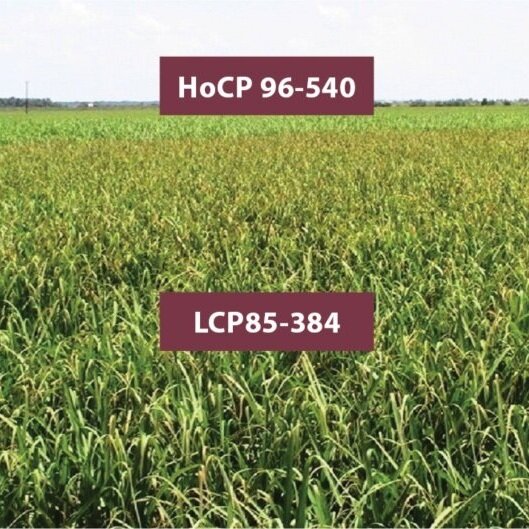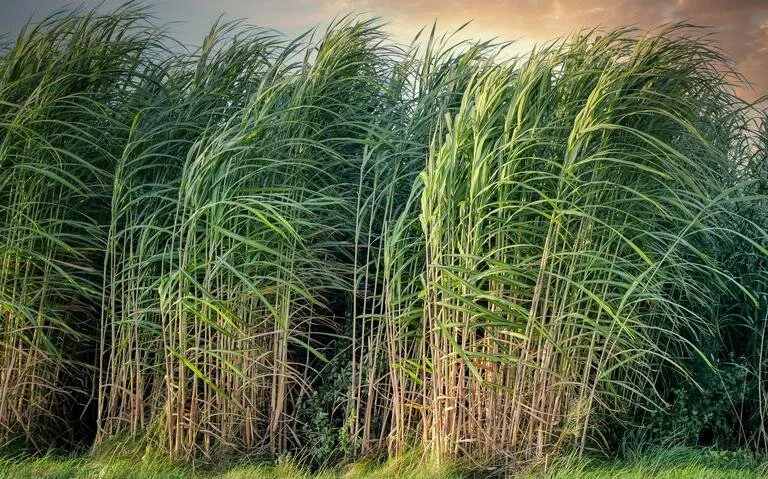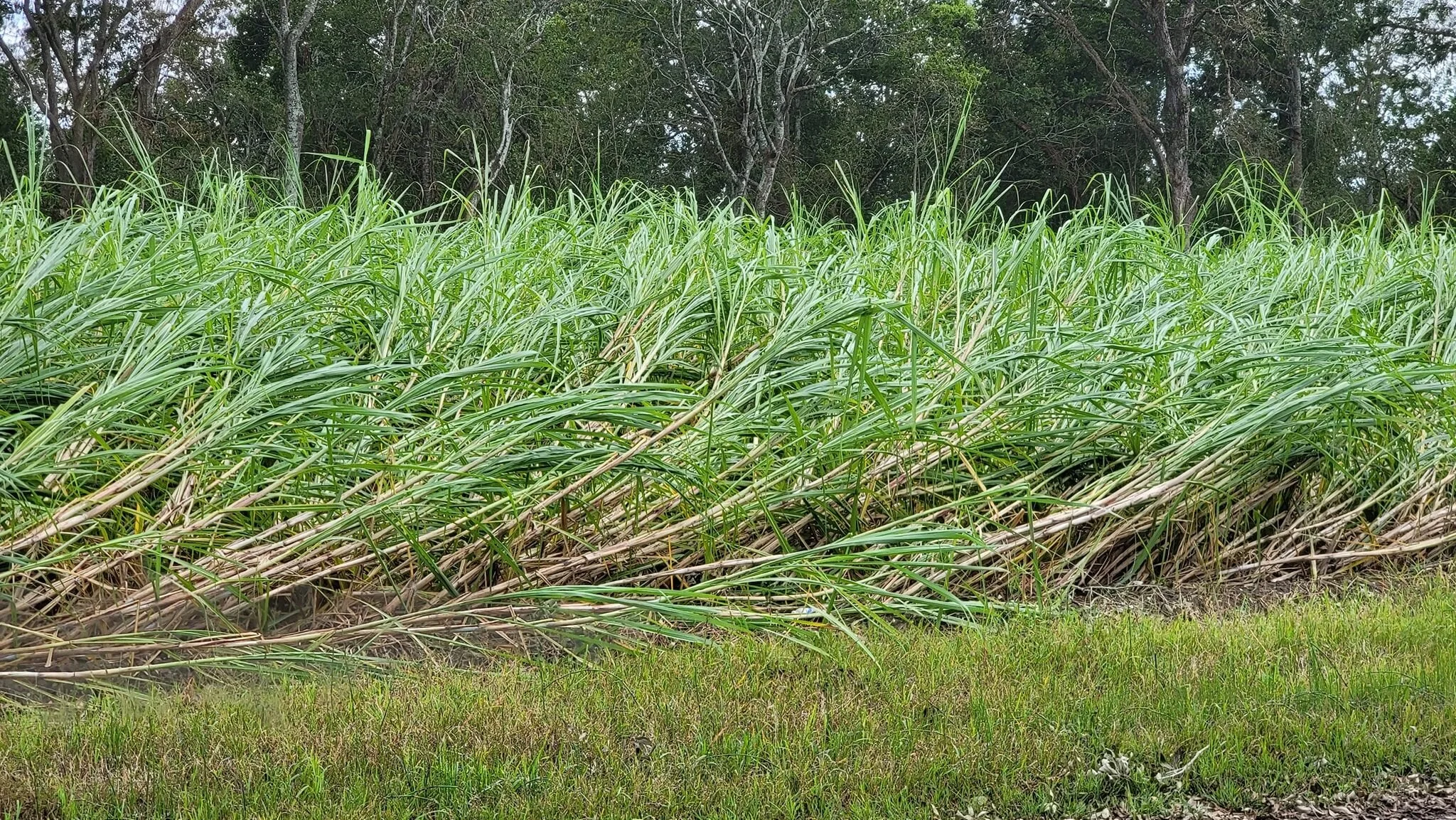After a near all-time record crop last year, Louisiana sugarcane growers can’t help but be a little bit disappointed with the 2021 crop. Growing conditions were challenging throughout the year, leading to a lighter crop. LSU AgCenter reporter Craig Gautreaux has this report from Assumption Parish.
Read MoreSugarcane producer Keith Dugas of Assumption Parish loves farming. He loves everything about it.
He remembers watching his father, the late Lloyd Dugas, on the tractor and he couldn’t wait for his turn.
“My father came from a family of ten brothers and one sister,” Dugas said. “Four of the brothers farmed and then went on to other things as they got older.”
Farming during the elder Dugas’s time was different. It was certainly labor intensive, and
took a lot of hands to bring in a sugarcane crop. Other crops and livestock were grown as well. Moss picking was still a thing in Assumption
Read MoreIn the wee hours of the morning, as his train rumbled through sugar cane fields in central Louisiana, Union Pacific Locomotive Engineer Cory Van Mol watched in disbelief as a farm tractor failed to yield at a private crossing.
The tractor made it across, but Van Mol didn’t let the close call end there. He wanted to do something to try to prevent more close calls or potential tragedies during the sugar cane harvest in Louisiana.
Read MoreThe LSU AgCenter hosted a sugarcane field day at Dugas Farm, Inc. on Oct. 20 in Assumption Parish. The field day was supported by the Patrick F. Taylor Foundation.
The Taylor Foundation awarded a grant to the LSU AgCenter to fund a four-year research project on reducing nutrient runoff from crop fields. Forty-two event attendees were provided with unique learning opportunities and hands-on demonstrations that highlighted the benefits of the best management practices being researched on this project.
Read MoreA few weeks of dry weather are giving St. Mary sugar cane farmers a break, although it's a working break.
After what experts called a great 2020 cane crop, farmers have worried their way through a hard freeze in February, pushed machinery through mud created by months of heavy rain and watched with trepidation while tropical weather approached.
The US Department of Agriculture in its Oct. 12 World Agricultural Supply and Demand Estimates report raised from September its estimate of 2020-21 sugar ending stocks but lowered its forecast for 2021-22 ending stocks as lower imports and lower cane sugar production more than offset higher beginning stocks and higher beet sugar production.
For 2020-21, which ended Sept. 30, the USDA lowered domestic cane sugar production by about 20,000 tons, raw value, as a late start to the sugar cane harvest in Louisiana pushed more sugar into the new marketing year. Beet sugar production was unchanged from September.
Read MoreThe sugarcane crop is ready to harvest, and Louisiana’s 11 sugar mills are grinding cane 24 hours a day.
About 15.5 million tons of cane is expected to be harvested this year. Based on past performance, the United States Department of Agriculture’s World Agricultural Supply & Demand Estimates is predicting we’ll produce about 1.8 million tons of raw sugar from that 15.5 million tons.
Read MoreThe LSU AgCenter will host a Sugarcane Field Day on Oct. 20 at Keith Dugas Farm in Assumption Parish.
The forum is supported by the Patrick F. Taylor Foundation and Natural Resource Conservation Service. The Foundation awarded a grant to the LSU AgCenter to fund a four-year research and demonstration project on reducing nutrient runoff from crop fields.
Read MoreAgriculture Secretary Tom Vilsack has directed the U.S. Department of Agriculture (USDA) to aid recovery efforts for farmers, ranchers and residents affected by Hurricane Ida. USDA staff in offices across the country are ready to respond with a variety of program flexibilities and other assistance to producers and communities in need.
Read MoreIn February 2021, after sugarcane was made eligible for the USDA- Quality Loss Adjustment (QLA) program, many Louisiana sugarcane farmers applied for Quality Loss Adjustment (QLA) payments for the 2018 and/or the 2019 crop year(s) with many Louisiana sugarcane producers receiving Quality Loss Adjustment (QLA) payments for one or both crop year(s).
Read MoreSugarcane is a tall perennial grass of tropical origin that is cultivated for its ability to store sucrose in its stalks. Attempts to grow sugarcane in Louisiana began in the early 1700s. In the 1750s, the French Jesuits were among the first to successfully grow and harvest several crops of sugarcane at their New Orleans plantation. However, it was not until 1795 when Étienne de Boré, aided by experienced “sugar makers” from Haiti, successfully granulated about 100,000 pounds of sugar that Louisiana farmers recognized sugarcane as a potential cash crop.
Read MoreHer’s was not a typical reign, but then again, nothing was typical in 2020. When Erin Jeanne Blanchard was crowned at the 2019 Sugar Cane Festival, no one could know the events that would soon follow. It didn’t take long to discover, though, Erin was not one to let a pandemic set her plans aside. But we'll let her tell the story.
Read MoreHurricane Ida negatively impacted an estimated 118,000 acres of sugarcane crops in Louisiana, or about 26% of the crop that would be harvested for sugar production in the state, according to a preliminary report released on Tuesday, Sept. 14. The projection, produced by the Louisiana State University and the industry group Sugar League, says that the area hit by the storm will have agricultural yield losses ranging from 16% to as high as 29%. Louisiana is the second largest sugarcane producing state in the United States after Florida. Sugar produced from cane accounts for roughly 43% of the total sugar produced in the country, with the rest coming from sugar beet processing, according to the U.S. Department of Agriculture.
Read MoreOne of the two sugar refineries in the New Orleans area that were shuttered because of Hurricane Ida planned to reopen on a limited basis over the weekend with power restored at midweek.
The ASR Group (Domino) Chalmette refinery at Arabi, La., had outside power restored late Sept. 1.
Read MoreLSU AgCenter agents are beginning the arduous task of damage assessment and recovery from Hurricane Ida.
Given the geographic area affected, the biggest economic impact is likely to be to agricultural infrastructure and timber, said Kurt Guidry, LSU AgCenter region director and agricultural economist. But sugarcane, livestock, soybeans, fruit and vegetable crops, and the horticulture industry also experienced losses.
Read More














